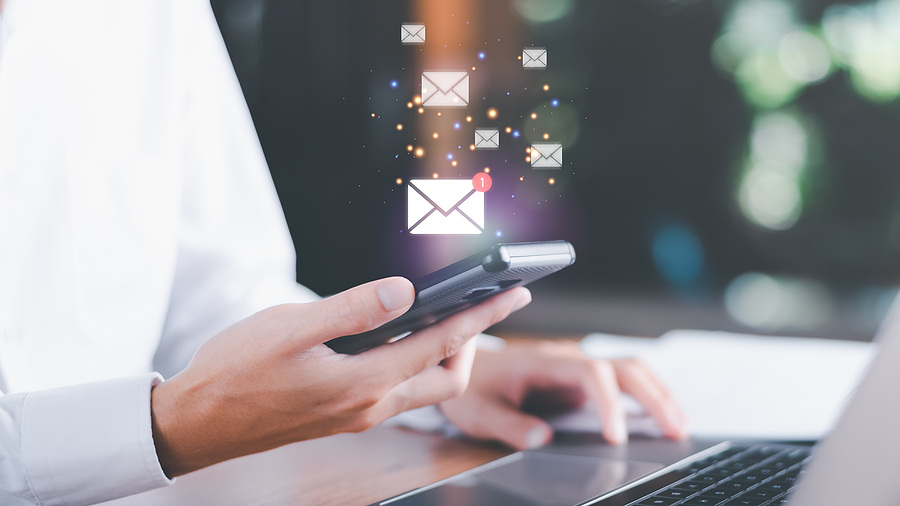2 min read
15 Tips for Creating a Powerful Email Subject Line
Originally published June 2017; Updated May 2024. Did you know that, every day throughout the world, over 306 billion emails are sent and...
4 min read
Kari Switala
:
Jun 14, 2024 2:12:04 PM

Originally posted in August 2018; Updated June 2024
As humans, we all have innate psychological tendencies that affect our perspectives and choices. From how we decorate our homes to the careers we choose and the cars we drive, every decision we make is colored by these cognitive biases.
Therefore, if you want to convert leads into customers, it helps to understand what motivates them to buy — a.k.a., the psychology of conversion. If you can understand how your leads’ biases affect the choices they make, you’ll have a better idea of how to present your product or service in a way that appeals to them and leads to a sale.
In this blog, we’ll take a look at five marketing strategies you can utilize to close your next deal and the psychology behind why they work.

Telling your story builds an emotional connection with your customers. As master storyteller Maya Angelou famously said, "at the end of the day, people won't remember what you said or did, they will remember how you made them feel."
This is true both in life and in business. Sharing your company’s story can help you connect more deeply with your customers, strengthening customer loyalty.
Did you know…
And all you have to do to build this valuable connection is to tell your story.
One of the best places to share your story is on the About Us page of your website. Here, you can tell your story in detail, including how you got your start and how your business has impacted your clients over the years. You can also tell your story through posts and videos on your social media channels and even weave parts of it into your sales collateral.
Learn more about the power of business storytelling in our recent blog post.

Sharing social proof with potential clients builds trust and credibility by showing them what others have to say about working with you.
“Social proof” is a psychological term that was coined by psychologist and author Robert Cialdini in 1984. It’s a psychological phenomenon where we look to others for guidance when making decisions.
Sharing reviews, testimonials, referrals, and case studies from satisfied customers offers proof to your leads that others have benefitted from working with you…and that they will too. Implementing social proof elements like these into your customer journey can impart confidence and motivate leads to buy.
If you don’t have much in the way of social proof, now is the time to start building up your repertoire:
People want to invest in products and companies that have a verified track record among their peers, so the more popular you appear, the more they’ll trust that they’ll find success working with you.

Personalizing your communication helps to create a more engaging and relevant experience for your leads, which drives conversions and builds customer loyalty.
This can look like:
Adding this kind of personal touch to your sales process can help leads feel valued and increase the likelihood that they’ll buy. Plus, today’s technology makes it easy to incorporate personal details into emails, offers, and more.
Note: When you use customer data in your personalization efforts, it’s important to clearly communicate how you do so. Being transparent about this will help you not only comply with data privacy regulations, but also retain the trust of your leads.

Creating a sense of urgency through the concepts of novelty and scarcity makes people more likely to buy.
Marketing strategies have revolved around novelty for generations. New car models are released every year; fashion shifts from season to season; phones and sneakers draw lines of eager followers willing to sacrifice hours (or days!) to get their hands on something new.
Novelty is attractive. According to a 2006 United College of London study,
A region in the midbrain (substantia nigra/ventral tegmental), which is responsible for regulating our motivation and reward-processing, responds better to novelty than to the familiar. This system also regulates levels of dopamine, a neurotransmitter in the brain.
Dopamine is a feel-good neurotransmitter, and novelty boosts the release of dopamine in your brain. When you offer something new, you’ll see higher conversion rates.
Imagine your favorite brand sends you an email that says, “limited time offer!” How fast do you open it?
This kind of trigger works because it creates a sense of urgency through scarcity — there’s a narrow window to buy that product, sign up for that class, buy that flight ticket. It makes us much more motivated to act, and act quickly!
Scarcity works because no one wants to miss out on a good thing. #FOMO
When we see a product, service, or offer as scarce or in limited supply, we’re more likely to make a purchase.
Using either novelty or scarcity to create a sense of urgency can help you convert more leads. However, make sure not to overuse this tactic. Remember the boy who cried “wolf”? If you’re constantly saying you have something new or there’s a limited supply of your product, eventually it’ll just become white noise.

Two forces — the pursuit of pleasure and the avoidance of pain — are hard-wired into us. We also have a psychological need to know why we should do something. Meet those needs by showing your leads exactly how your product or service will help them succeed, as well as what they’ll miss out on if they don’t work with you.
To do this, you must first identify what your target audience needs (a.k.a., their pain point). Then, showcase how what you’re offering can meet that need.
Whether you’re selling a skincare product that will leave their skin glowing or an email campaign that will boost their conversion rate, you need to make it crystal clear to your audience why they should buy — i.e., how what you’re offering will make their lives or their business better.
On the flip side, it’s also effective to show potential customers the consequences of choosing not to take advantage of your offer: dull, lifeless skin or fewer conversions, for example.
When you can show how your product or service helps your leads avoid their pain point and achieve success, you’ll draw them closer to a sale.
And that, my friends, is a bit of an introduction to the psychology of conversion. There's a huge volume of resources out there on harnessing hard-wired, predictable psychological tendencies to convert customers and close sales — these are just a few examples.
Looking for more marketing strategies to grow your reach, draw in leads, and convert more sales? The Wild Fig team would love to help. Schedule a free exploratory call to talk about how we can help you meet your goals.

2 min read
Originally published June 2017; Updated May 2024. Did you know that, every day throughout the world, over 306 billion emails are sent and...

During this chaotic time,people are more stressedand distracted so you have to work harder to get your prospect’s attention. This means drawing...

Part 2 of our Key Metrics Series Search Engine Optimization, or SEO, is a huge part of a successful website…so much so, that it deserves its own...